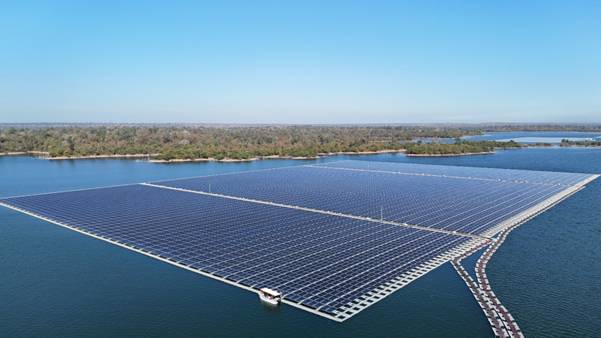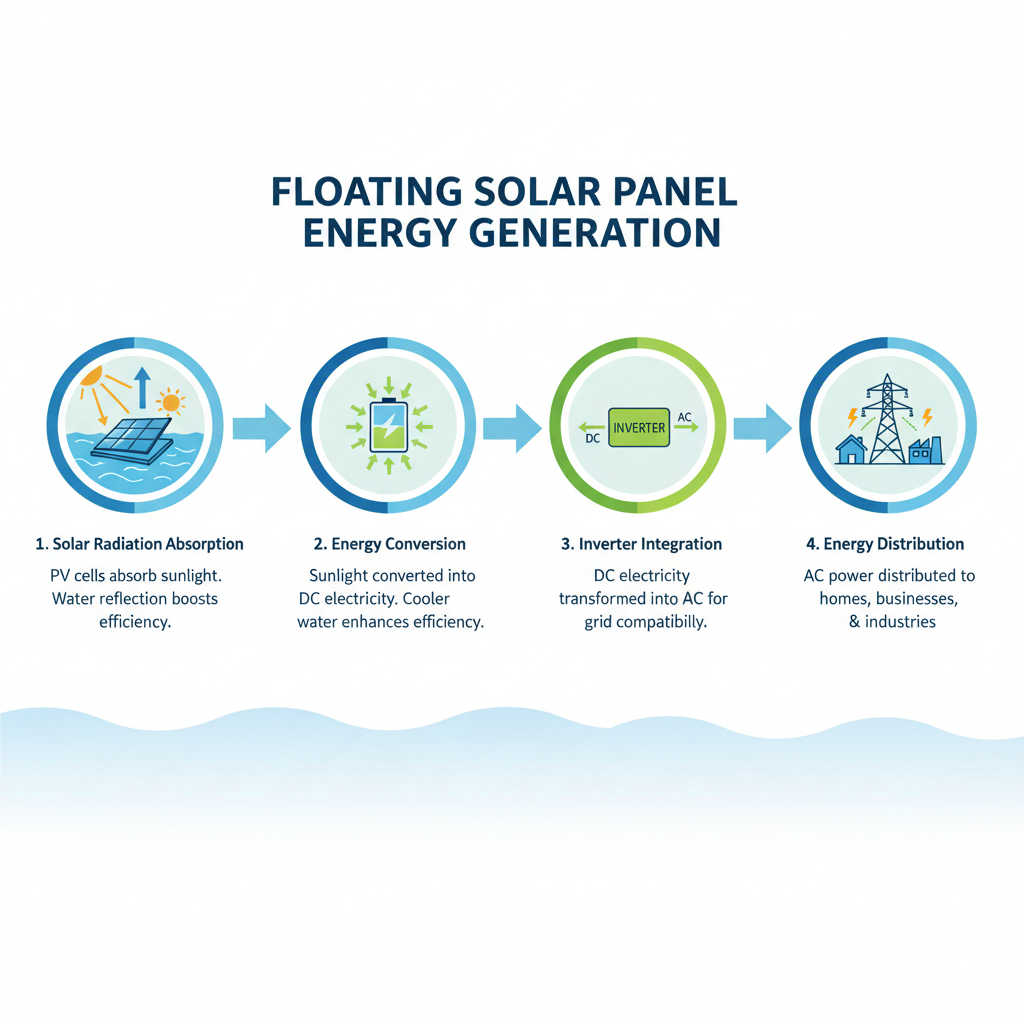Our reservoirs and lakes serve a dual purpose: not only do they store water, but they also capture solar energy. In a world with increasing population density and limited land, innovative engineers are exploring the unused potential of our water bodies. Floating solar panels represent a revolutionary solution that is significantly impacting the energy industry.
Floating solar plants are producing clean energy by turning placid water bodies into power centres, maximising available space, and saving on such precious natural resources.
And yet there is so much more to this notion. To explore the nature of the floating solar technology, its astonishing advantages and other projects that are defining the future of renewable energy in India, we delve into the working of the technology.
What is a floating solar power plant?
A floating solar power plant is a type of solar panel mounted on a platform which is placed on water, like a reservoir, lake or backwater. The installations are used as an alternative to solar farms on land, which are located in areas with limited or high costs of land.
The panels also generate electricity through solar panels, but with an extra benefit of minimising water evaporation and increasing energy production since the water cools the panels.

Source: PIB
How do floating solar panels work?
Having floating solar panels have introduced a very interesting twist to the conventional solar technology, and it easily adapts to the special needs and possibilities presented by water-based conditions.
Although their operating principles are similar to those of traditional solar panels, their design and functionality will take advantage of their water location.

These solar panels are floating on water bodies, thus not just using unutilised areas but also performing better in the cooler operating environment, with reflective surroundings, so they can be considered a breakthrough in renewable energy technology.
Largest floating solar power plants in India
India boasts of a few of the most innovative floating solar systems in the world, and it is at the forefront of renewable energy. Once again, moving a step forward into the direction of a green nation, Tata Power Solar has ordered the largest floating solar power plant in India. The following is a closer examination of these impressive installations and how they have helped in green power.
Congratulations to all the stakeholders, the Madhya Pradesh Government, and the Solar Power Park Developers – Rewa Ultra Mega Solar Limited, NHDC Ltd, AMP Energy Green Pvt Ltd, and SJVN Ltd – for the successful commissioning of a 278 MW Solar Park along with solar projects. This… pic.twitter.com/EpvGvLlYVs
— Pralhad Joshi (@JoshiPralhad) January 4, 2025
Which is the largest floating solar power plant in India ?
Omkareshwar floating solar project is the biggest and largest floating solar power plant in India. The solar project is a floating 126 MW project constructed on 260 hectares of water in Madhya Pradesh. It has the largest inverter floating platform in the world, producing 204,580 MWh/year and offsetting 173,893 tonnes of CO 2 emissions.
Visited the Omkareswar Floating Solar Project in Khandwa District, Madhya Pradesh. It is one of the largest floating solar projects in Asia with an impressive capacity of 600 MW.
— Pralhad Joshi (@JoshiPralhad) January 4, 2025
This innovative renewable energy initiative, with a development cost of Rs. 330 Crores, is a… pic.twitter.com/LaGRVCmL1x
Moreover, it saves 32.5 million cubic meters of water every year, which was a new benchmark in terms of efficiency and sustainability.
1. Place: Omkareshwar, Madhya Pradesh.
2. Capacity: 126 MW
3. Key highlights:
-
Built over 260 hectares of water
-
The biggest floating inverter platform in the world.
-
Produces 204,580 MWh per year, which counterbalances 173,893 tonnes of CO2 emissions.
-
Saves 32.5 million cubic meters of water in a year.
Conclusion
Floating solar power plants, exemplified by India's Omkareshwar project, are revolutionising renewable energy. By harnessing water bodies, they overcome land limitations, boost efficiency through panel cooling, and minimise water evaporation. These innovative installations, of the floating solar power plants like the 126 MW Omkareshwar plant, mark a significant step towards a sustainable and greener future, which is making the showcase of India's leadership in this technology.
Comments
All Comments (0)
Join the conversation